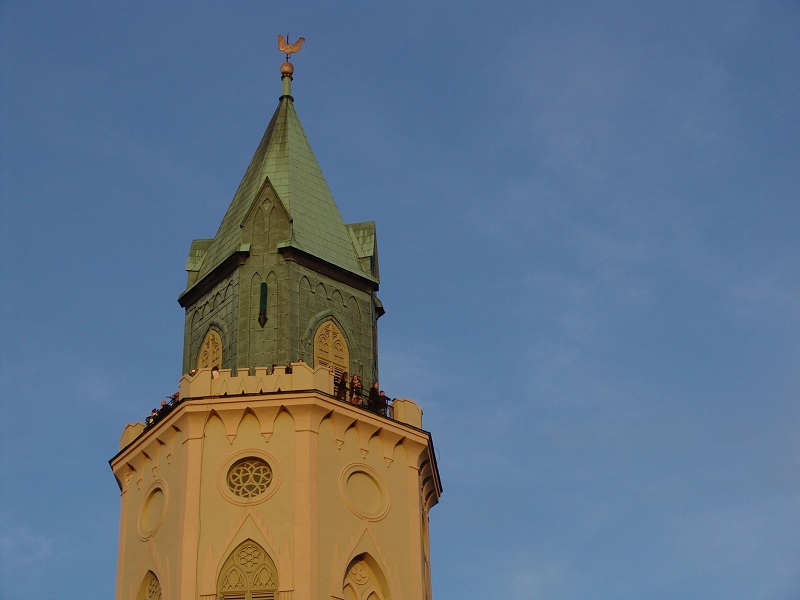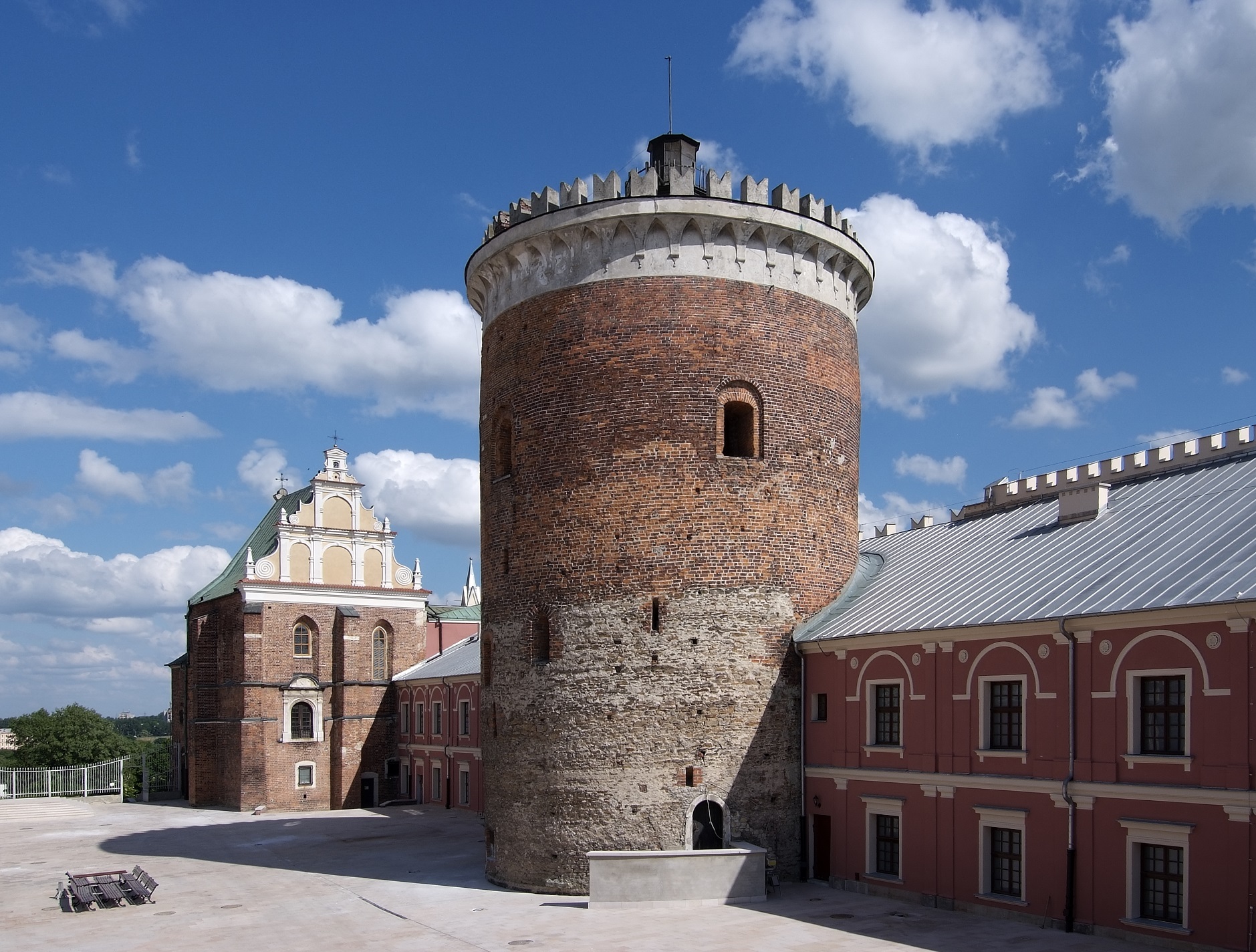The Old Town & The Castle Hill

Rybny Square was a market place where fish caught in the Czechówka River were sold. The Pawęczkowska townhouse in the square, named after one of its owners, was originally meant to be a church of the Trinitarian Order but the death of its benefactor, Dominik Lubomirski, stopped the building works. Some people blamed the unfinished investment on the stone of misfortune which lay nearby at the time. ...

It used to belong to Sebastian Klonowic, an acclaimed poet, town councillor and mayor. The façade is decorated with sgraffito medallions with images of four poets and writers associated with Lublin: Biernat of Lublin, Mikołaj Rej, Jan Kochanowski and Wincenty Pol. ...

In the first half of the 19th c. the building belonged to Tadeusz Wieniawski, father of the brilliant violinist and composer Henryk Wieniawski, born here on 10th July 1835. ...

This was the first permanent theatre in Lublin and one of the oldest institutions of this kind in Poland. It was built in 1822 according to the design by its owner and architect Łukasz Rodakiewicz. It was decorated with Classicist figurative ornaments such as arcades, leaf-like feminine masks and gryphons. The auditorium accommodated a total of 334 seats. The Old Theatre had successfully functioned until the opening of a new, presentable municipal theatre (now the Juliusz Osterwa Theatre) in 1887. In the beginning of the 20th c. the building was turned into a cinema first called ‘Theatre Op ...

In its heyday this outstanding edifice situated in the centre of Market Square served as the Crown Tribunal (1578 – 1794) – the highest judicial instance for the nobility from the whole Małopolska Region, established by King Stephen Bathory. The only other tribunal in the Kingdom of Poland was in Piotrków Trybunalski. Widely-practised corruption of judges and unjust sentences led to the dissolution of this institution. The most notorious case was a so-called a court of devils that supposedly took place in 1637. About 150 years later the building was redesigned by Dominic Merlini, a ...

"On its tower a tin cock fluttered, another - bore a clock that hummed a tune" - this is the beginning of A poem about Lublin by Józef Czechowicz. According to the legend, said tin cock, standing on the top of the Trinitarian Tower, used to warn the citizens about upcoming danger. Today it allegedly crows when a chaste maiden walks through the gate in the tower... ...

The characteristic Lublin Castle standing on a hill is one of the architectural and historical symbols of Lublin. The history of this place is both dignified and tragic. It is believed that an early medieval settlement existed on the castle hill as early as the VI century AD. In the XII century, the castellan had his seat here, and in the XIII century, a circular tower that exists to this day was built. ...

One of the most important monuments of Lublin is the church and monastery of the Dominican Order. The Dominicans arrived in Lublin in the 1230s. In 1342, after the Tatar invasion, King Casimir the Great ordered building a Gothic,single-nave, brick church in place of the previous, wooden one. It was named as the church of St. Stanislaus Bishop and Martyr. ...

Located on the courtyard of Jezuicka street, the Semicircular Tower, also known as the Gothic Tower, is one of the oldest buildings in Lublin. It was built in the XIV century of stone and brick. It was part of the defensive walls erected by king Casimir the Great. Wooden platforms allowed defenders to access the embrasures. ...

This fortified gate built in the 14th c. was a part of the defensive city walls. It was also a gateway between the Christian and Jewish quarters, which is why it was often referred to as the Jewish Gate. It was originally built as a quadrilateral structure crowned with crenels. Later on a foregate supported with buttresses was added. ...
Page 2 of 3











.jpg)

